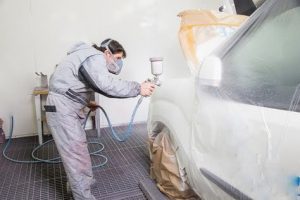Is your car drifting to one side when you drive? Or do your tires loose pressure at varying rates? Or maybe you’re even noticing your car is vibrating or shaking when you brake. These are all tell-tale signs of issues with your car’s tire alignment.
Tire alignment is crucial to the upkeep of your vehicle and the safety of everyone inside it. In this article, we walk you through the importance of wheel alignment and four common causes of misalignment in cars.

Search your car brand
brands

Why Having Your Car Aligned is Important
Ultimately, tire alignment is all about safety. That’s why having your car regularly and professionally aligned is so important. A misaligned car can cause serious issues:
- Accelerated wear on tires
- Damage to car parts
- Poor fuel efficiency
- Uneven or loose steering
When you’re behind the wheel and driving those you love, you want to do everything you can to ensure you make it safely to your destination. Looking out for signs and causes of misalignment, then bringing your car in to your local mechanic for an alignment keeps everyone safe and ensures your car is running as it should. Below are four popular causes of wheel and tire alignment problems that you should be on the lookout for.
Low Tire Pressure
If you’re noticing your car drifts when you’re driving, there might be an issue with your tire pressure. Keeping your tires inflated to the correct pressure, or PSI, provides better fuel efficiency, a longer lifespan for your car, and keeps your vehicle properly aligned. When you suspect misalignment in your car, the first thing you should do is check your tire pressure.
To begin, find your tires’ recommended PSI in the driver’s manual or on a sticker inside the driver’s side door. Then, using a tire gauge, check your tire pressure. You can do this with a tire gauge at home, or you can find a gauge at any public-use air pump, like those you find at gas stations. Check your tires, then, if needed, fill them to the recommended PSI.
After you’ve filled your tires to the correct PSI, take your car for a drive. If you aren’t noticing pulling or drifting, low tire pressure was causing the issue. Thankfully, filling up your tires isn’t inexpensive, and if you keep your tires filled consistently, they won’t cause any wheel or tire alignment problems for your car.
Heavy Impact
Sometimes, a tire alignment issue surfaces after your car has experienced a heavy impact or sudden jarring. If you’re like most drivers out there, you’ve hopped a few curbs in your lifetime. Contact with a curb or driving over a deep pothole can have negative long-term effects on your vehicle. Even the slightest bump from backing into a pole can alter your car’s alignment.
Any time your car has been impacted or has hit another car, pole, curb, or pothole, you should have your alignment checked. Chances are that things have shifted. Even if you don’t immediately notice, your car’s alignment might be off, causing issues in the future.
For example, let’s say you hit the curb which, unbeknownst to you, threw your car’s suspension out of alignment, and you decide not to have it checked out. In as little as 200 miles, your tires will likely already have suffered from uneven wear. Instead of going down this road and costing yourself more in the long run, bring your car to the shop and make sure your alignment is as it should be.
Worn Parts
If you’ve got an older car or a vehicle with high mileage, your misalignment might be due to routine wear and tear. Worn wheel bearings are common causes for misalignment problems, causing your tires to tilt and no longer sit at the correct angle. Suspension springs are other parts that, when worn, alter your car’s alignment.
If worn parts are the cause of your tire and wheel alignment problems, you should do two things:
- First, fix the problem. Replace whatever parts are old or damaged so you can safely drive your vehicle.
- Second, take preventative measures. Bring your car in for routine service checks, so your mechanic can determine if other parts need to be replaced before they cause any real damage.
You’ll increases your car’s lifespan by replacing old parts before they wear out completely. And you’ll save money in the long run, because worn parts won’t cause unnecessary damage to other parts of your car. A misalignment might easily be fixed with a simple parts replacement.
An Overdue Re-Alignment
Lastly, your car might need to be aligned simply because it’s time. In the same way you need to change your oil every few months, you should have your car aligned regularly. Thankfully, you likely don’t need an alignment as frequently as you need an oil change!
How often you bring your car in for an alignment depends on what type of vehicle you own, your driving habits, and other factors, but most professionals would recommend having it done at least every two to three years. To maintain your car’s optimal safety, some experts suggest having your car aligned at least once a year.
Regardless of your alignment schedule, the important thing is you remember to have it done. Car alignment is often a car care practice that car owners forget about until something goes wrong with their vehicle. By proactively bringing your car in for alignments, you keep your car running smoothly and safely, and you prevent unnecessary damage to your brakes, tires, or other parts of your car.
Conclusion
As you’ve seen, wheel alignment can be caused by a single moment, over the course of a few years, and even by worn parts from a car that’s seen thousands and thousands of miles. We hope this article helps you recognize signs of misalignment so you can have your car serviced and drive it for many years to come!
Search your car brand
brands

Can’t find your color code? enter your details manually here






























































